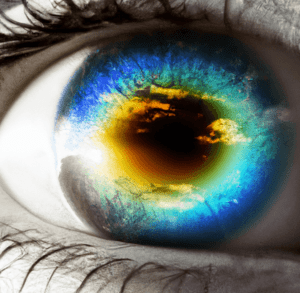Seven Interesting Eye Facts Everyone Should Know
Seven Interesting Eye Facts You Should Know
The human eye is a marvel of biology and technology, a complex organ that allows us to see and experience the world around us. From its intricate structure to its incredible abilities, the human eye is a fascinating subject that has captivated scientists, doctors, and enthusiasts for centuries. Every health enthusiast should know some interesting eye facts about the human body.
1. The human eye can distinguish between over a million different colors.
The human eye can detect a vast array of colors, ranging from deep red to bright violet. This ability is due to specialized cells in the retina called cones, which are sensitive to different wavelengths of light. People with normal color vision can distinguish between over a million colors, making the world around us dazzling and varied.
2. The human eye can detect light as dim as a single photon.
Photons are the smallest light units, and the human eye can detect them. Under the right conditions, such as when the eye is completely dark-adapted, the rods in the retina can detect a single photon of light. This remarkable sensitivity is due to the ability of the rods to amplify the signals they receive from light, making them able to detect even the faintest glimmer.
3. The human eye can change its focus up to 50 times per second.
The human eye is a remarkable piece of machinery that adapts to changing conditions in real-time. One of its most impressive abilities is quickly and accurately changing its focus, allowing us to easily see objects at different distances. This ability is controlled by the ciliary muscles, which alter the lens’s shape to adjust the eye’s focus.
4. The human eye has a blind spot.
Despite its many remarkable features, the human eye has a blind spot where the optic nerve enters the eye. This spot is where the nerves and blood vessels that supply the eye enter and exit, not covered by light-sensitive cells. However, the brain can fill in the missing information so that we are unaware of the blind spot.
5. The human eye can regenerate itself.
Unlike many other organs in the body, the human eye can regenerate itself to a certain extent. The outer layer of the eye, the cornea, can repair itself after an injury or scratch. The eye also contains stem cells that can differentiate into different types of cells, allowing for the potential regeneration of damaged tissue.
6. The human eye is an important indicator of overall health.
The eyes are often called the windows to the soul but are also an important indicator of overall health. Eye doctors can detect various conditions by examining the eyes, including high blood pressure, diabetes, and certain types of cancer. A routine eye exam can help to catch these conditions early, improving the chances of successful treatment.
7. The human eye is one of the most complex organs in the body.
The human eye is an incredibly complex organ comprising numerous interconnected structures and cells. Every part of the eye is finely tuned to perform a specific function, from the cornea and iris to the retina and optic nerve. It is estimated that over half of the brain’s resources are dedicated to processing visual information from the eyes, underscoring the importance of this remarkable organ.
In conclusion, the human eye is a fascinating and intricate organ that plays a vital role in our daily lives. From its remarkable sensitivity to light and color to its ability to regenerate and indicate overall health, the human eye is truly a marvel of biology and technology. Health enthusiasts can better appreciate this incredible organ and its role in our visual experience by understanding these interesting facts about the human eye.
Trust your eyes with award winning eye care at Levin Eye Care Center. Schedule your appointment today via text or a phone call to 219-659-3050.



